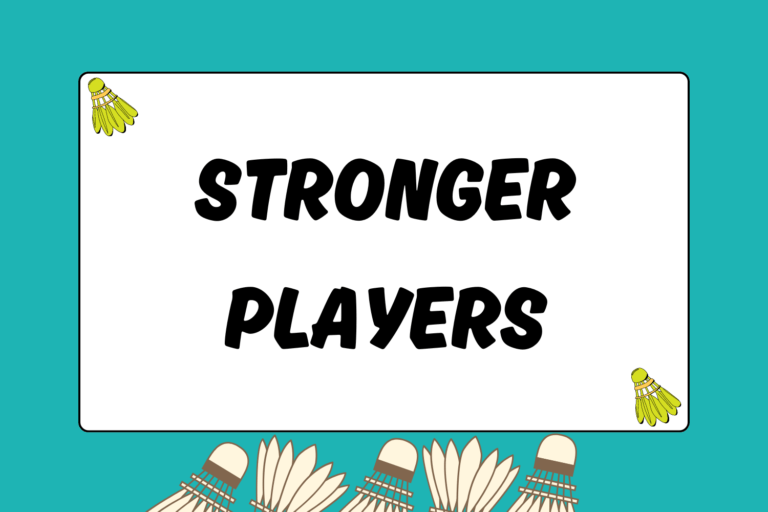Since there are rarely any opportunities to play badminton at the junior high level, most players joining a high school badminton team don’t know what to expect.
In this guide, you’ll find a brief overview of some things you can expect to see. While every team and school is different, this will lay out a solid foundation for the basic aspects of high school badminton.
Tryouts
While there is a set amount of players on a varsity team, the junior varsity is usually only limited by the facility. If you’re thinking about trying out for your high school badminton team, try to speak with the coach or a team member beforehand. Since it’s a less established sport than many others, badminton may not have strict guidelines to follow when trying out for a team.
The requirements are often at the coach’s discretion, which gives you another great reason to chat before tryouts. Again, the coach will decide on cuts and the final roster size, but you can expect anywhere from 40 to over 100 players.
Team Composition
A badminton team consists of a varsity team and a junior varsity team. Teams can either be single-gender or coed. The teams are comprised of the following:
Coed team
- 4 boys’ singles
- 4 girls’ singles
- 3 boys’ doubles
- 3 boys’ singles
- 3 mixed doubles
Single-gender
- 4 singles
- 3 doubles
The exact number of teams on varsity will vary depending on your school’s league. The league needs to gauge the amount of interest and participation and will sometimes even cut varsity teams by one for each event.
Equipment & Facility
Your school likely has a multi-purpose gym with badminton lines (as well as other sports like volleyball and basketball). Gyms usually have 6 to 12 courts, depending on their size.
The two things provided for you are shuttles and a court to play on. You must purchase your own rackets, shoes, and any other equipment you need.
Schedule
Typically, there are two game days per week — either Monday and Wednesday or Tuesday and Thursday. Naturally, practice will take place on days without a match, with challenge days coming on Fridays.
Badminton is usually played as a spring sport, although some leagues may play during the winter or fall. The regular season lasts around 10 to 12 weeks, depending on if you make it to the playoffs.
Practice
Like other sports, badminton practices are usually split into varsity and junior varsity times. They will usually be structured similarly, with the varsity squad possibly getting more practice time.
The JV squad would most likely focus on basic drills like footwork and execution. Varsity, meanwhile, would refine these techniques while also incorporating some match-related drills. Aside from technique-based drills, expect a fair amount of strength and endurance conditioning.
Challenge Day
While a lot of sports have clear lines drawn between the varsity and junior varsity teams, there are constant opportunities to move up on a badminton team. Badminton is unique in this sense, and it creates more incentive for players to work hard, especially on challenge day.
Challenge day is a weekly occurrence in which players can challenge one another to try to move up in the rankings. With players shuffling around from week to week, this means your spot on the varsity team is never safe.
Hot Tip: Give it Your All
When doing challenges, don’t be afraid of playing higher-ranked players. The ranking only means that the other player beat you in the match that first determined your rankings. If you continue to work hard and steadily improve, there’s no reason you can’t legitimately move from the JV squad to the top of the varsity team.
Scrimmages
Scrimmages are unofficial matches against other schools that may or may not be in the district. Although there aren’t any pre-season games, schools can set up scrimmages to help prepare for the regular season. Additionally, schools outside the league or district can schedule matches before or during the season.
League Play
Again, the format of badminton league play will vary depending on your particular league. As a general rule, your school will play each other school twice, once at your gym and once in theirs. While your team will amass an overall record, your individual records will be noted, especially if you’re on varsity.
Game Day
On game days, you’ll show up at the appropriate gym about 30 minutes after school. Only varsity games will count toward your team’s overall score. To win, your school will simply need to win more matches than the other school. Varsity matches will be played until the last one is completed. Afterward, JV matches will commence until everyone has had a chance to play.
If you finish your match before all of them have been completed, you should stick around to support your team. Even if you were the first to play, it’s in the best interest of the team that you stay to cheer on your teammates and perhaps even offer some advice.
Playoffs
After the regular season is over, a committee meets with all the badminton coaches from each school to determine each team’s seeding in their respective events.
After the brackets are formed, the dates and times are set for the playoffs. The host school, chosen at the beginning of the year, will accommodate all the participants in a two- or three-day tournament. The format is single elimination, the first to win two out of three games.
The top three in each event will automatically qualify to play in your league’s associated sectionals. The fourth and fifth-placed teams will serve as alternates in the event that any of the qualified teams cannot participate.
Fun & Competitive
Since badminton teams can potentially have a lot of members, there is always someone there to push you to compete harder. This also means there are constantly opportunities to socialize and have fun.
Even though badminton is a competitive sport, this doesn’t mean you shouldn’t enjoy yourself. If you’re even mildly interested in playing badminton for your high school team, the least you can do is check it out. Talk to some players on the team, or schedule a quick chat with the coach. There are no obligations to trying out, only opportunities.





